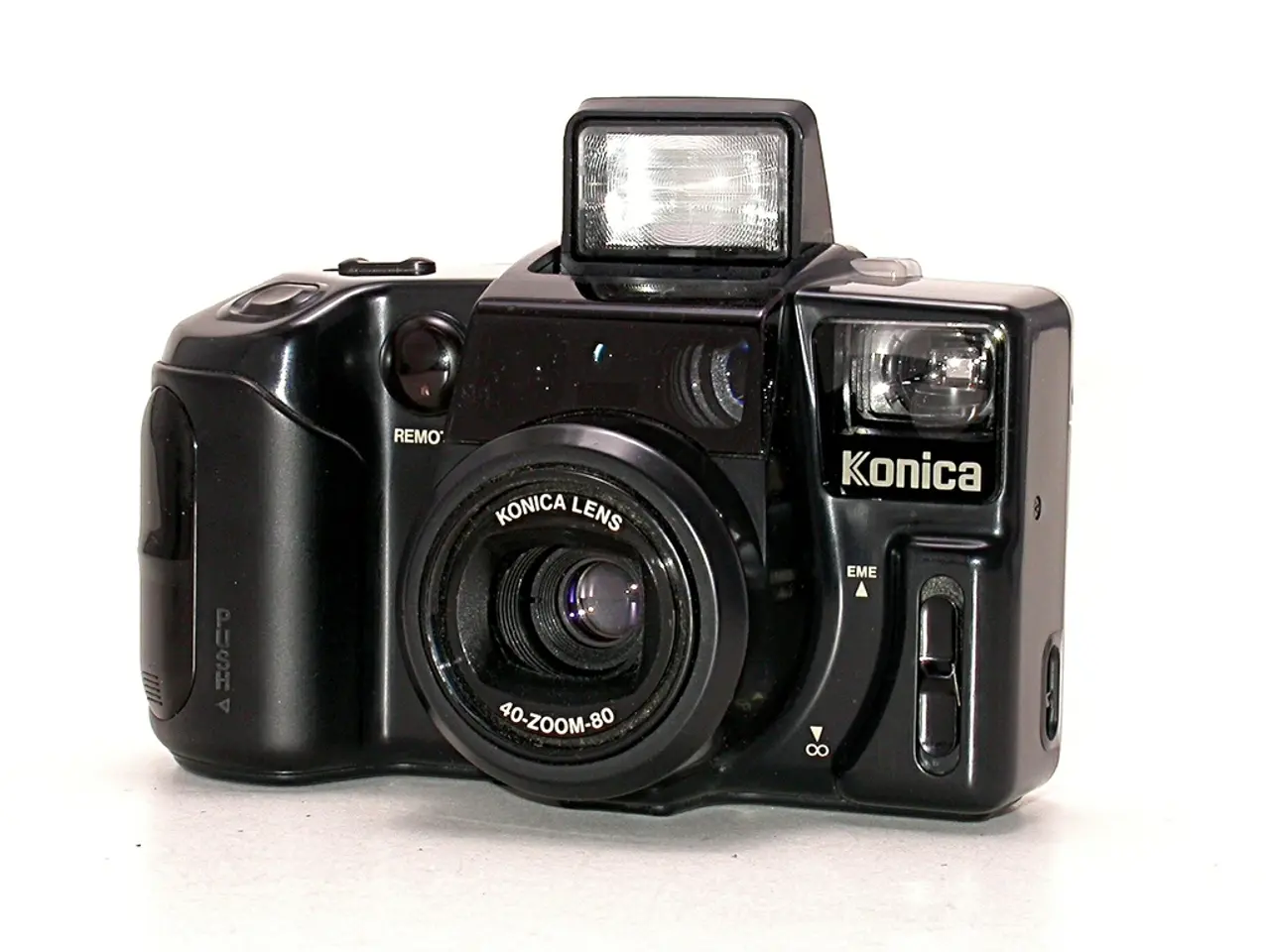Least Efficient or Flawed Digital Cameras that have Made an Appearance
Light field photography, a revolutionary approach to capturing images, has been making strides in recent years. This technology, which allows for adjusting the focus point after an image is taken, was first demonstrated by the Lytro cameras in 2012. However, its implementation has yet to result in a successful, high-performing camera.
Early Attempts and Missteps
The Pentax K-01, a mirrorless camera released in 2012, used the same SLR lens mount as Pentax DSLR cameras but suffered from slow contrast detection focus and a design that was often referred to as toy-like. The Lytro Illum, a "professional" version of the Lytro light field camera, was released with higher image quality but forced users to share images through the Lytro website, which no longer exists. The Polaroid Socialmatic, another attempt at integrating photography and printing, was large, awkward to use, and suffered from build quality issues, with the battery failing after some time.
The Casio TRYX TR100, a unique digital camera with a touchscreen and movable frame, and the Ricoh GXR modular camera system, which allowed users to swap out the camera lens and sensor unit, also faced criticism for their bulky designs and limited practicality. The OMGLife Autographer, a wearable camera designed to automatically take photos when life events happened, was unpredictable, unreliable, and had terrible image quality.
The Fall of Traditional Digital Cameras
Casio, a once prominent player in the digital camera market, exited the industry in 2018. The Leica M10-D, a digital camera without a screen, designed to mimic the experience of analog photography, was difficult to use without a screen, and the Wi-Fi connection was unreliable. The Samsung Galaxy NX, one of the first mirrorless cameras with Android built-in, suffered from early bugs that made it slower and more difficult to use than a standard camera. The Polaroid Socialmatic, a digital camera with the ability to print photos, was released but faced criticism for its high price, slow performance, and low-quality images.
The Rise of Light Field Displays and AR
Despite these early setbacks, light field photography technology is advancing rapidly. As of mid-2025, significant breakthroughs have been made in real-time, high-resolution image reconstruction, practical augmented reality (AR) applications, and accessible 3D visualization systems.
Researchers have developed a Real-Time and Universal Network (RTU-Net) that enables multiscale, high-resolution light-field image reconstruction in real time. This can be applied across scales from microscale to macroscale volumetric imaging, enhancing the quality and utility of light field photos in scientific and industrial domains.
CREAL introduced light field AR smart glasses that digitally simulate prescription lenses while delivering authentic 3D depth perception. This technology enables natural, comfortable vision correction and true 3D visualization, with promising applications in surgery and military training. However, challenges remain in miniaturization, durability, and user customization before mass-market adoption.
The Future of Light Field Photography
Major smartphone manufacturers like Apple and Google are developing systems combining micro-lens arrays and neural rendering to capture depth and multi-frame data, allowing post-capture refocusing and relighting. By 2030, consumer devices might routinely capture 3D datasets manipulable by AI-based apps, substantially enhancing photographic flexibility and creativity.
New low-cost systems enable real-time 3D light-field viewing using conventional 2D monitors and simple accessories like red-cyan glasses, with eye-tracking to adjust perspective dynamically. This democratizes 3D interaction for education and media without expensive hardware.
Future directions for light field photography include the development of holographic and volumetric capture techniques using advanced neural waveguides and meta-optics. Longer term, quantum imaging and photon-based sensors combined with AI might produce “digital twin” photographs with infinite manipulability in space, time, and style, redefining photography itself.
In summary, light field photography technology has made substantial progress toward real-time, high-resolution capture and display, with growing integration into AR and consumer devices. Its potential lies in enabling versatile 3D imaging experiences, enhanced vision correction, and fully interactive photos, though challenges remain in hardware miniaturization, computational demands, and user adaptation. This trajectory suggests rapid advances through the late 2020s and 2030s toward mainstream adoption and transformative applications in many fields.
However, it's worth noting that putting Android into a digital camera may not always be the best solution, as it often results in out-of-date software and neglect, leading to built-in obsolescence. Panasonic's Lumix cameras with 4K/6K photo offer post-focus adjustment, a similar feature to light field photography, without the need for a specialized operating system.
[1] Real-Time and Universal Network (RTU-Net) for Light-Field Image Reconstruction
[2] CREAL AR Smart Glasses: A Step Toward Authentic 3D Vision
[3] The Future of Light Field Photography: A Review
[4] Democratizing 3D Light-Field Interaction with Eye-Tracking and Red-Cyan Glasses
Gadgets like the CREAL AR Smart Glasses incorporate technology such as light field displays and are taking significant strides in the realm of augmented reality. In the future, smartphones from manufacturers such as Apple and Google may also integrate this technology for capturing depth and multi-frame data, changing the landscape of photography.
Aside from cameras, other gadgets such as the Real-Time and Universal Network (RTU-Net) demonstrate advancements in technology, enabling high-resolution light-field image reconstruction in real time, with potential applications in various scientific and industrial domains.




